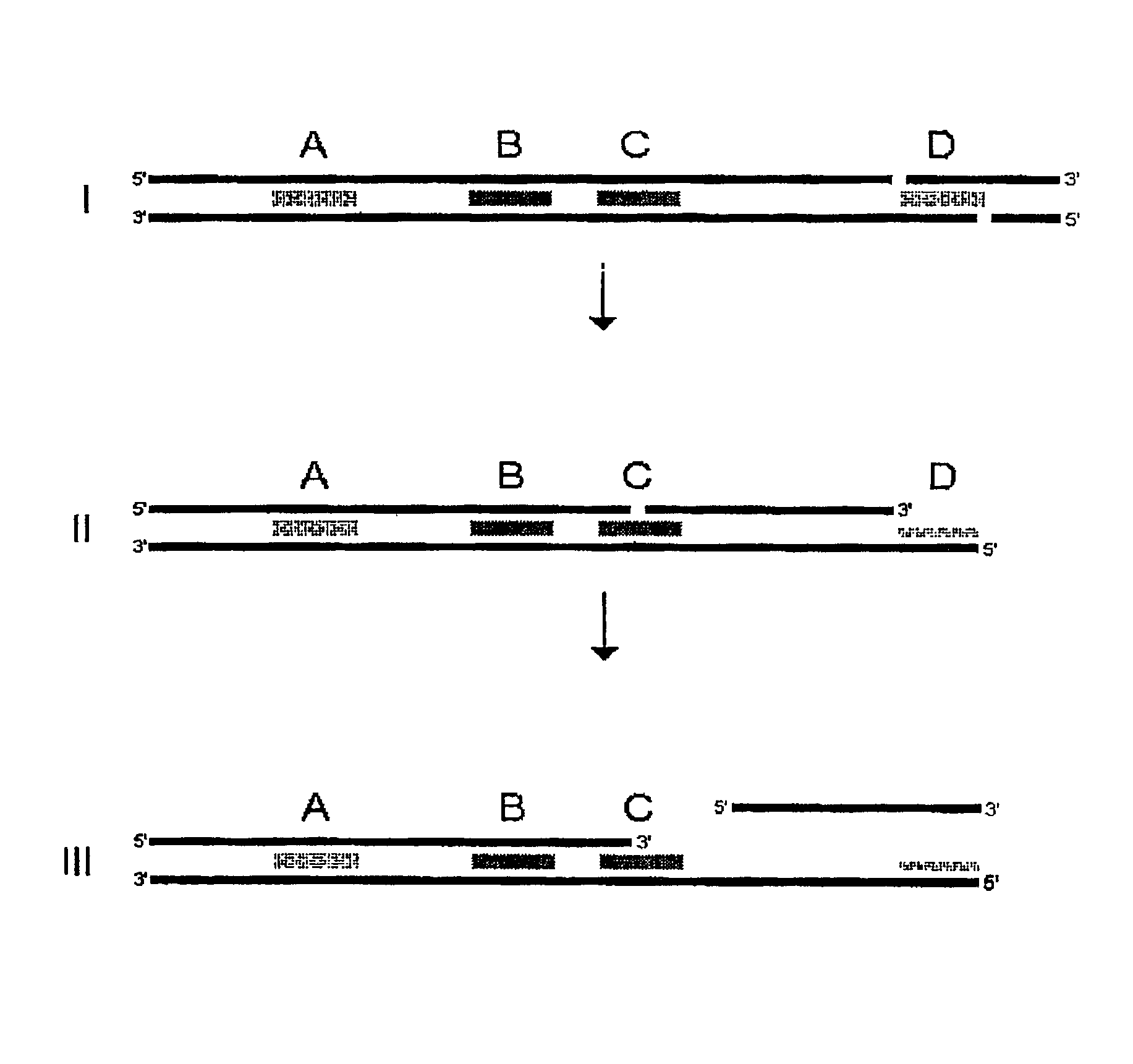Single-stranded polynucleotide tags
a single-stranded polynucleotide and tag technology, applied in the field of single-stranded polynucleotide tags, can solve the problems of time-consuming analysis, complex nucleic acid population analysis is a common problem, time-consuming analysis, etc., and achieve the effect of simple counting statistics
- Summary
- Abstract
- Description
- Claims
- Application Information
AI Technical Summary
Benefits of technology
Problems solved by technology
Method used
Image
Examples
example
[0754]The present example illustrates how three different plasmids can be used to simulate tag analysis in more complex biological systems. The example demonstrates the principles of how one would obtain and detect a single stranded polynucleotide tag. In a first step specific test RNA molecules are produced. A second step is concerned with the synthesis of custom oligos on magnetic beads. In step three, the test RNA molecules are used as templates for second strand synthesis. A single stranded tag comprising a sequence of 10 nucleotides is isolated in step four, and the single stranded tags are detected as described in step five.
[0755]“. . . ” as used herein below denotes an intervening sequence of varying length. “I” as used herein below indicates a 5′-3′ bond in a hair-pin type structure, when connecting two nucleotides in a sequence printed over two lines.
Step 1: Production of Specific Test RNA Molecules:
[0756]PCR fragments from CTR1 (GenEMBL acc #U83460), CTR2 (GenEMBL acc #U83...
PUM
| Property | Measurement | Unit |
|---|---|---|
| diameter | aaaaa | aaaaa |
| diameter | aaaaa | aaaaa |
| temperatures | aaaaa | aaaaa |
Abstract
Description
Claims
Application Information
 Login to View More
Login to View More - R&D
- Intellectual Property
- Life Sciences
- Materials
- Tech Scout
- Unparalleled Data Quality
- Higher Quality Content
- 60% Fewer Hallucinations
Browse by: Latest US Patents, China's latest patents, Technical Efficacy Thesaurus, Application Domain, Technology Topic, Popular Technical Reports.
© 2025 PatSnap. All rights reserved.Legal|Privacy policy|Modern Slavery Act Transparency Statement|Sitemap|About US| Contact US: help@patsnap.com



